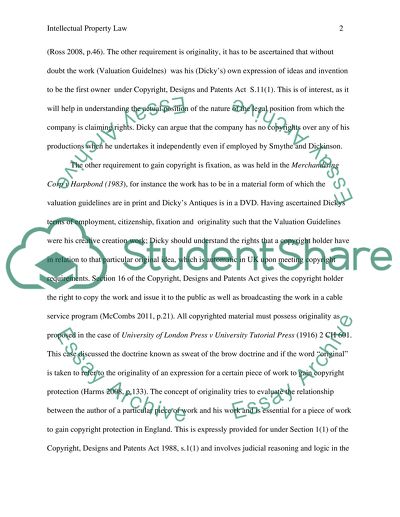Cite this document
(“INTELLECTUAL PROPERTY LAW Essay Example | Topics and Well Written Essays - 2750 words”, n.d.)
INTELLECTUAL PROPERTY LAW Essay Example | Topics and Well Written Essays - 2750 words. Retrieved from https://studentshare.org/law/1481588-intellectual-property-law
INTELLECTUAL PROPERTY LAW Essay Example | Topics and Well Written Essays - 2750 words. Retrieved from https://studentshare.org/law/1481588-intellectual-property-law
(INTELLECTUAL PROPERTY LAW Essay Example | Topics and Well Written Essays - 2750 Words)
INTELLECTUAL PROPERTY LAW Essay Example | Topics and Well Written Essays - 2750 Words. https://studentshare.org/law/1481588-intellectual-property-law.
INTELLECTUAL PROPERTY LAW Essay Example | Topics and Well Written Essays - 2750 Words. https://studentshare.org/law/1481588-intellectual-property-law.
“INTELLECTUAL PROPERTY LAW Essay Example | Topics and Well Written Essays - 2750 Words”, n.d. https://studentshare.org/law/1481588-intellectual-property-law.


